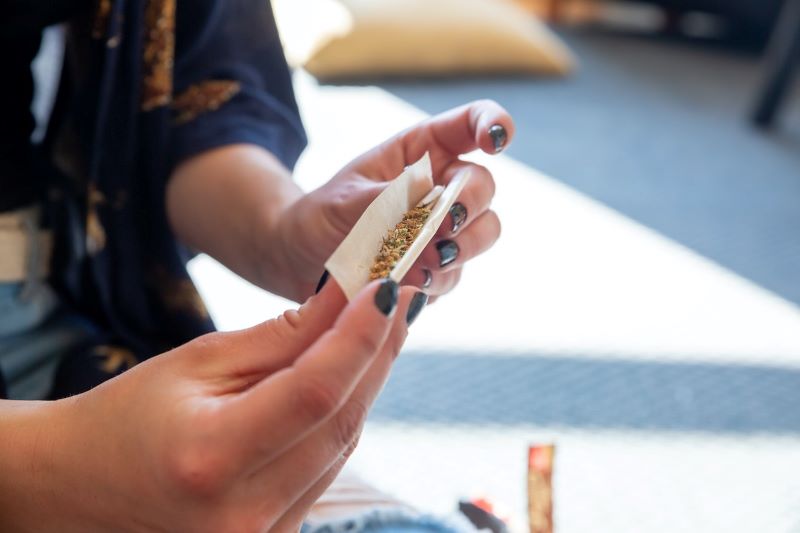If you are anything like us, you know that there are few things more pleasurable than a perfectly rolled joint. Like all art forms, your final product will only be as good as the materials used to craft it. While quality cannabis is given, have you considered that your papers may limit the quality of your rolls?
The rolling papers you use have a critical role in the way your spliffs eventually smoke. Regardless of the quality of your herb, the quality of your herb grinder, or your skill as a roller, if you smoke with garbage paper, you can expect garbage results. Papers affect the way your joints burn, how quickly, and how they taste while they’re lit. With so much on the line, we want you to have all the information you need to roll the best possible joints.
What are you burning?
There are several materials used to make rolling papers. Each has a slightly different flavor and way of burning. Try experimenting with each to figure out what’s best for your tastes and your budget.
Wood Pulp
These papers are made from processed wood pulp, which is a description roughly as appetizing as referring to a hot dog as “pork pulp.” In truth, wood pulp is a great material for rolling with, which explains their enduring popularity.. They burn evenly and stay lit, though some find the smoke is less enjoyable and can affect the flavor of their joints.
Hemp
Hemp rolling papers are made from a plant called hemp, which is one of the most sustainable crops grown. Hemp papers burn slowly and roll with ease. Most notably for cannabis smokers, hemp papers offer a flavor that readily complements their herb of choice. This is because hemp is actually just another name for cannabis, though hemp is bred primarily for its stem and fibrous plant portions rather than its flowering buds. As such, it only makes sense to use every part of the plant to roll the best possible joint.
Rice
Rice paper is thin, and new smokers might find it difficult to roll with. The benefit of rice paper is that it provides a very slight smoke with a mild flavor, which allows the flavor of your herb to fully shine on its own. Rice paper may also come with a variety of added fibers, such as flax, so it may be worthwhile to read the label when buying rice paper, to ensure you know what you’re getting.
Flavored
Flavored papers, such as Juicy Jays, Twisted Hemp, or other brands, are a popular choice among many and are made from a variety of materials. Purists may push flavored joints aside, as they eschew “additives” in favor of purely organic materials, or they may simply prefer the nuance of their herb. For those of us who like to have fun, a flavored joint can add a hint of whimsy into our lives and make it worth living.
How has your joint been treated?
Like all products, rolling papers can undergo a series of additives, processes, and additions from the time it starts as wood pulp to the time it blazes up in your hand. People who are health conscious may have some preferences surrounding what they smoke, so it’s worth looking into what processes your favorite brand has undergone.
Bleached
Bleached rolling papers are treated with chemicals to achieve their perfectly white appearance. While they are the most common papers available at convenience stores, some smokers get a little ick from the idea of smoking bleach. Though bleached papers are just as safe as their browner counterparts, they do have a slightly different flavor.
Unbleached
Unbleached rolling papers are becoming much more popular with younger smokers who are more health conscious. While unbleached papers aren’t any safer than bleached papers, they do have a fetching light-brown color, as well as a slightly different texture and flavor. Some of the most popular brands today are unbleached.
Size Matters
Rolling papers come in various sizes to accommodate different smoking preferences, namely, whether you want a delicate little spliff or a fatty joint the whole crew can pass around.
1 ¼
This is the most popular size. Most convenience stores carry these papers to accommodate tobacco smokers. A 1 ¼ is a nice medium size that can serve as a personal joint for experienced smokers or be passed among a few friends.
King Size
King-size rolling papers are larger and generally used for joints that are designed to be shared, unless you’re Willie Nelson, in which case, they are half of a joint.
Single Wide
Single wide papers are the smallest of these sizes and perfect for people who want a delicate, slim joint.
Whatever papers you use, the most important thing to look for is quality. A quality paper should roll well, without splitting, and burn evenly. The best way to find the perfect papers for you is to try a variety and see what feels, smokes, and tastes best for you and your preferences.

